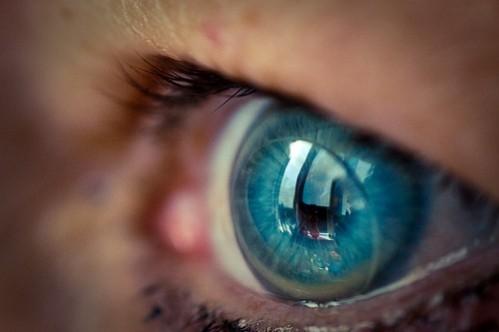
Contact lens wearers who dump their used lenses into the toilet and then flush them out are contributing to the microplastic pollution that is currently plaguing the planet's oceans.
According to a new study led by the Arizona State University (ASU), there are currently over 45 million people in the United States alone using contact lenses on their eyes. It is common for a person to have multiple pairs of lenses and some of them are disposed off after a few months of use. It is a massive industry and the US alone makes over $2.7 billion a year.
For the first time, researchers have now found that people who are disposing off contact lenses in the drain are adding to the pollution in the oceans.
The ASU research team is presenting their results at the 256th National Meeting and Exposition of the American Chemical Society (ACS) this year.
In a release put out by the ASU, the authors note that inspiration for this study came directly from personal experience.
"I had worn glasses and contact lenses for most of my adult life," said Rolf Halden, of ASU. "But I started to wonder, has anyone done research on what happens to these plastic lenses after their useful lifespan is over?"

Halden's team were already researching plastic pollution and they were unable to find any paper on the subject of what happens to lenses after people are done with them.
"Then we began looking into the U.S. market and conducted a survey of contact-lens wearers," PhD student Rolsky said.
Researchers found that 15 to 20 percent of contact-lens wearers are flushing the lenses down the sink or toilet. Considering how 45 million people in the US alone wear lenses, that amounts to about 1.8 to 3.36 billion lenses flushed out every year, that means about 20,000 to 30,000 kg of plastic added as wastewater every year."
As part of the study, the team found out what would happen to about 13 different lenses from different makers—each made from nine different types of plastic.
Lenses washed down the toilet are typically conveyed to sewage treatment plants, notes the study. Researchers found that treatment plants separate waste into microplastics, which normally gets caught up as sludge. For about every kilogram of this sludge, one pair of contact lenses can be found on average.
Sewage sludge is something that is usually mixed with land for the purposes of both disposal and soil conditioning, notes the report. This creates a clear pathway where macro-and microplastics from contact lenses can enter land ecosystems. Lenses left on the soil could have adverse effects that are yet to be fully understood, Halden said.
Lenses that do not end up in the soil, often end up in the water. The report notes that it was not directly observed in the study, but, plastics are known to run-off from sludge-amended soils and pollute surface water. It is possible for fragmented contact lenses to pass through wastewater-treatment plants and enter water bodies as microplastics.

















